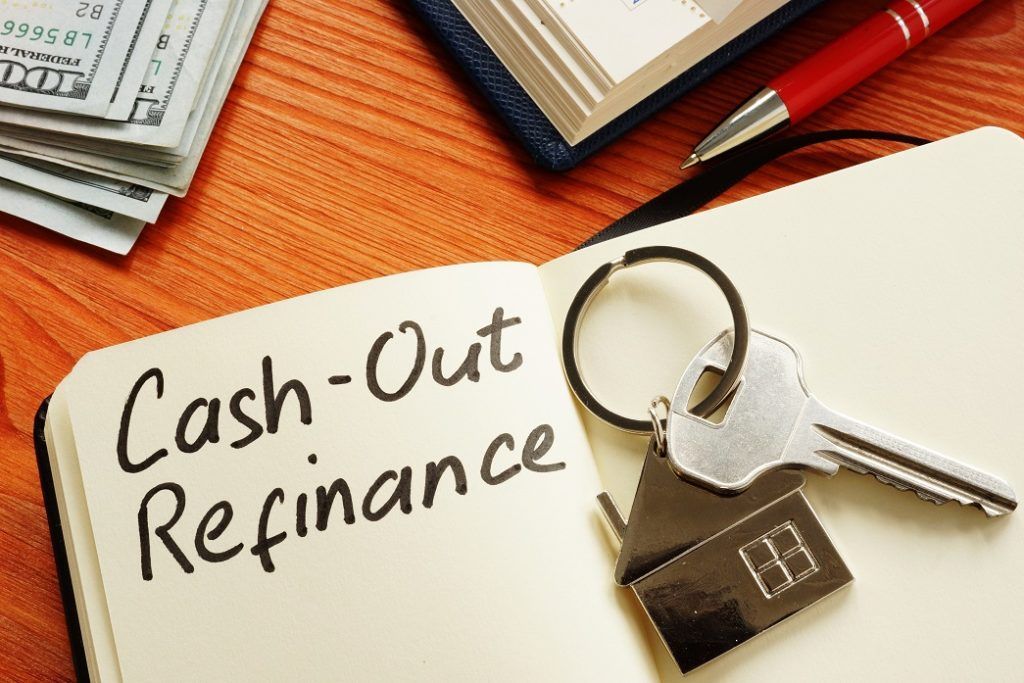Refinancing a mortgage on your investment property can be a lifesaver if done at the proper time in the proper way. It can dramatically cut your monthly payments, give you what you need for renovations and upgrades, or even provide the funds to make a down payment on an additional rental property.
Getting a mortgage for rental and investment properties differs a lot from that of a primary home. The same goes for refinancing, as the requirements are more stringent, considering the higher risk involved.
This article will discuss a few refinancing guidelines to keep in mind before you move forward. These will help you determine the best time to refinance and whether or not this is a good option for you to make the most out of your investments.
Why Refinance an Investment Property?
First things first—let’s review what it means to refinance an investment property.
In simple terms, refinancing is taking out another loan to pay off your current mortgage. Sometime during the course of your mortgage, more attractive mortgage packages or loan terms can become available. These can be in the form of lower interest rates or longer payment terms.
Refinancing can be particularly helpful if you think your current payments are holding you from making improvements or repairs on your property. Refinance to a better rate will also lower your monthly mortgage payment and maximize your earnings on your real estate investment. A general rule is to try cutting interest rates by two percent if the opportunity presents itself.
Mortgage refinancing is also a good step to take for owners who want to free up the home equity they already have on their investment property. Refinancing gives you more financial freedom to continue investing in additional properties with the equity you have on your current rental property.

Pros & Cons of Investment Property Refinancing
Refinancing an investment property is a financial strategy that involves replacing an existing mortgage with a new one, often with more favorable terms. Property investors often consider refinancing to capitalize on market conditions, reduce monthly expenses, or unlock equity for further investments. Like any financial decision, there are both advantages and disadvantages to consider when contemplating refinancing an investment property.
PROS
- Lower Interest Rates: One of the primary reasons investors choose to refinance is to secure a lower interest rate. As market conditions change or credit scores improve, a lower interest rate can significantly reduce monthly mortgage payments and overall borrowing costs. This could lead to increased cash flow and improved profitability on the investment property.
- Access to Equity: Refinancing allows investors to access the accumulated equity in the property. By taking out a new loan for an amount greater than the remaining mortgage balance, property owners can obtain cash that can be used for various purposes, such as funding new investment ventures, home improvements, or debt consolidation.
- Debt Consolidation: Refinancing can enable investors to consolidate multiple debts into a single, manageable loan. By consolidating high-interest debts like credit cards or personal loans into the mortgage, investors may benefit from lower overall interest rates and simplified repayment plans.
- Term Extension or Shortening: Depending on the investor’s goals, they can choose to extend the loan term to reduce monthly payments or shorten the term to pay off the loan faster. Lengthening the term may be beneficial for those seeking improved cash flow, while shortening the term can save thousands in interest over time.
- Enhanced Cash Flow: Lowering monthly mortgage payments through refinancing can lead to increased cash flow, allowing investors to reinvest the surplus funds into other investment opportunities or property maintenance and upgrades.
CONS
- Costs and Fees: Refinancing an investment property involves various costs and fees, including application fees, appraisal fees, closing costs, and potential prepayment penalties from the existing loan. These expenses can be substantial and may take some time to recoup through the potential savings achieved by refinancing.
- Impact on Credit Score: Applying for a refinance involves a credit check, which can have a temporary negative impact on the investor’s credit score. While this impact is usually minor, it’s essential to consider the potential consequences if planning other major financial transactions in the near future.
- Market Fluctuations: Property values are subject to fluctuations based on market conditions. If property values decline, refinancing may become challenging, and investors might not be able to access as much equity as initially anticipated.
- Risk of Overleveraging: Accessing equity through refinancing can be tempting, but it also carries the risk of overleveraging the property. Increasing the loan amount without a solid investment plan may lead to financial strain if property values decrease or rental income drops.
- Long-Term Interest Costs: While refinancing can lead to lower interest rates initially, extending the loan term could result in higher total interest costs over the life of the loan. Investors should carefully weigh the short-term benefits against the long-term implications.

Types of Refinancing for Investment Properties
One thing to keep in mind while you’re looking at refinancing is the options available to you. There are lots of different programs on the market, but a rate-and-term refinance and a cash-out refinance are the most common refinancing options for investment properties.
Rate-and-Term Refinancing
This type of refinancing replaces your current mortgage with an entirely new loan having more favorable terms. For instance, you may want to shift from a 5-year adjustable-rate mortgage (ARM) to a 15-year fixed-rate mortgage.
Take note that you will not receive cash from the equity of your home in this type of refinancing. Its main goal is to change the term of your mortgage and/or lower interest rates to reduce overall borrowing costs by extending the loan term to reduce monthly payments. That way, you can program your mortgage payments better and use the remainder of your rental income for repairs, maintenance, and upgrades.
Cash-Out Refinancing
A cash-out refinance works exactly like the rate-and-term, but you get the added benefit of receiving cash that you can spend on home improvements or even to purchase an additional investment property. Lenders usually allow borrowers to take out a loan for more than what they owe on their current mortgage as long as they maintain at least 20% equity on the property.
Investors who have gained equity in their current property usually go for this option if interest rates are lower than when they initially purchased their investment home.
What to Expect When Refinancing Investment Properties
If you’ve been renting out investment properties, you’ll know that interest rates will be higher than a mortgage taken out on a primary home. Lenders have to protect themselves since lending on investment properties involves higher risks.
You also need to be aware that lenders will impose a more stringent loan-to-value (LTV) on your refinance. The LTV is the amount of the mortgage divided by the property’s appraised value. That’s why you need to have a certain amount of equity built on your investment property in order to qualify for a refinancing.
Another thing to prepare for when refinancing is closing costs. These can include mortgage fees, insurance fees, and property fees and are paid out of pocket. However, you can make arrangements with the lender to roll these costs into the new loan itself.

Basic Requirements for Refinancing Investment Properties
While things can vary depending on the lender, these are the general requirements when refinancing an investment property:
- Minimum credit score of 620
- Maximum debt-to-income ratio (DTI) of 50%
- Maximum LTV of 75% for rate-and-term refinancing
- Maximum LTV of 75% for 1 unit and 70% for 2 – 4 units for cash-out refinancing
- Cash reserves of at least six months’ work of mortgage payments
Keep in mind that a 620 credit score is the minimum required to qualify for refinancing. You can have access to more attractive rates if you have a more impressive credit score and history. The more cash reserves you also have, the better your chances of getting the best refinancing rates and terms.
Is Refinancing Worth It?
Just like any business deal, refinancing comes with its own risks. For one, a lower mortgage rate isn’t always guaranteed. Also, if you choose to extend the mortgage term, you can end up paying more interest over the life of the loan, even if interest rates are lower.
Refinancing an investment property can make a lot of sense for some, but everything boils down to your personal circumstances and your investment goals. We can’t tell you which one is right for you, as you are likely eligible for some and not for others.
Current mortgage rates also make the biggest impact, so if you aren’t able to get a better rate, it might be safer to stick to your current mortgage. The most important thing is to do your homework, follow these refinance guidelines and crunch the numbers to see if everything makes sense.